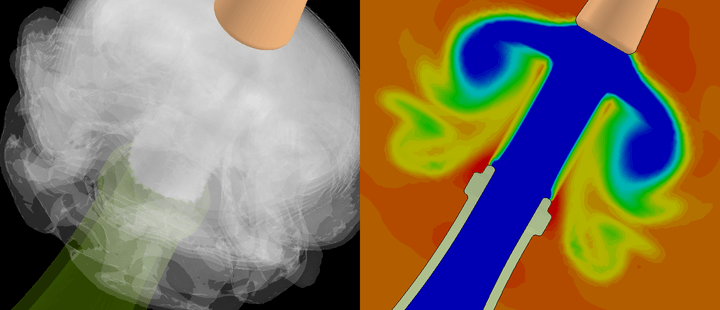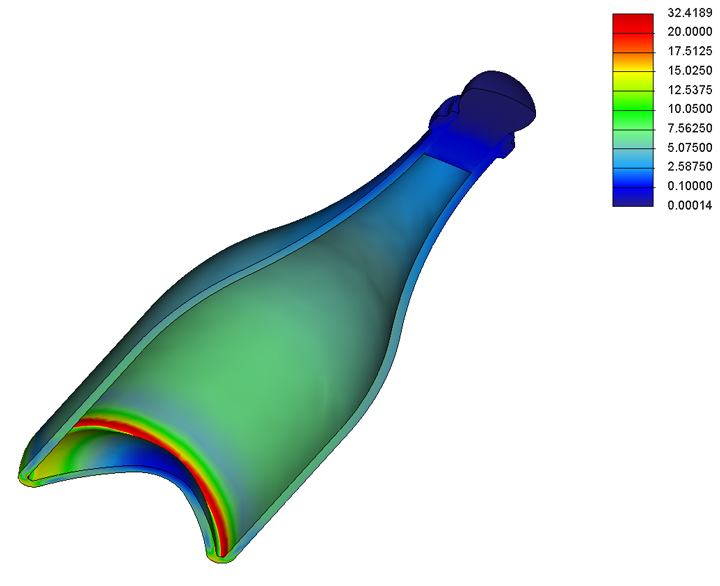Newsletter December 2018
Time flies when you’re having fun
For us 2018 has been a beautiful and incredibly busy year. With a fresh start in a new office, we carried out many interesting and challenging FEAs, CFD analyses and optimisations for new and existing customers. We would like to thank you for the interesting projects.
We wish you happy holidays and a bright new year!

Champagne during New Year? What is actually happening?
What happens if you pop a bottle of champagne with a bang? We tried a CFD analysis using FloEFD to find out and came to surprising results. The temperature of the gas above the champagne is reduced by more than 100 °C during uncorking and it comes out of the bottle with supersonic velocity (up to Mach 2.6).
During the uncorking, the gas between the champagne and the cork escaped. This CO2 gas is initially under pressure. This CO2 came into the bottle through the fermentation process, in which yeast converts the sugars into CO2 and ethanol. Unlike normal wine, champagne undergoes a second fermentation process in the bottle (the prise de mousse), so the CO2 stays in the bottle until the cork goes off and there is a considerable overpressure.
In the animation you can see the temperature development during the decorking process. It can clearly be seen here that it drops sharply when the gas leaves the bottle. More than 100 °C below zero!
After these findings, we did a search on the internet and found an interesting article that substantiated this. The sharp fall in temperature is caused by the sharp drop in pressure (adiabatic expansion). The higher the starting temperature of the champagne, the lower the final temperature. At higher temperatures the CO2 even freezes (currently not modeled in our CFD analysis). In our simulation we assumed an initial temperature of 12 °C. Nice to see that our results match the article results.
For those interested, the link to the article and its makers below:
Unveiling CO2 heterogeneous freezing plumes during champagne cork popping
And what about the stress within the bottle, when the cork is still on it? At 12 °C the CO2 supplies a pressure of 6 bar. We looked at it with FEA in Creo Simulate. The stresses at the pontil mark (the dent at the bottom of the bottle) are considerable. It is obvious that the pontil mark is needed and that its shape affects the stresses in that area.

HEC closed between Christmas and New Year
We are closed from December 24, 2018 until Januari 1, 2019. We hope to be of service from January 2, 2019.

